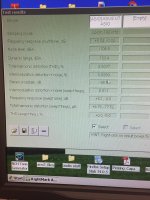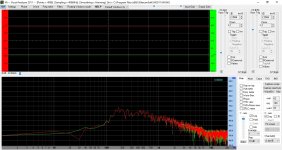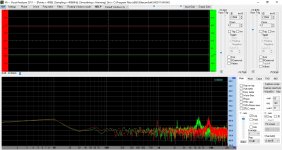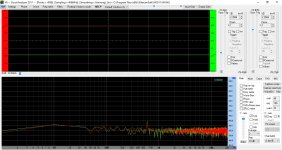Hi Guys
As someone mentioned way back, it would be much simpler to build a few fixed-frequency oscillators and possibly some matching filters for analysis. When you target <1ppm performance things are difficult enough for producing a low-distortion signal and then measuring the outcome precisely, so why not make things simpler by avoiding continuously-variable frequency?
For me, a 1kHz and a 20kHz frequency are fine. 1kHz will generally show you what THD is like at the most sensitive part of our hearing, where 20kHz will show you how linear the amp is and how susceptible it might be to TIM.
Have fun
As someone mentioned way back, it would be much simpler to build a few fixed-frequency oscillators and possibly some matching filters for analysis. When you target <1ppm performance things are difficult enough for producing a low-distortion signal and then measuring the outcome precisely, so why not make things simpler by avoiding continuously-variable frequency?
For me, a 1kHz and a 20kHz frequency are fine. 1kHz will generally show you what THD is like at the most sensitive part of our hearing, where 20kHz will show you how linear the amp is and how susceptible it might be to TIM.
Have fun
THD measurement equipment
I find this equipment quite reasonably priced for a DIY audio amateur:
https://www.quantasylum.com/content/Products/QA401.aspx
But I haven´t tried it.
I find this equipment quite reasonably priced for a DIY audio amateur:
https://www.quantasylum.com/content/Products/QA401.aspx
But I haven´t tried it.
A lot of information about this equipment here:
http://www.diyaudio.com/forums/equipment-tools/231401-quantasylum-qa400-qa401.html
http://www.diyaudio.com/forums/equipment-tools/231401-quantasylum-qa400-qa401.html
What do you guys think about a setup using RightMark Audio Analyser with a decent external sound card, like Xonar U7 from ASUS?
Latest News. Audio Rightmark
https://www.asus.com/Sound-Cards/Xonar_U7/
Latest News. Audio Rightmark
https://www.asus.com/Sound-Cards/Xonar_U7/
What do you guys think about a setup using RightMark Audio Analyser with a decent external sound card, like Xonar U7 from ASUS?
Latest News. Audio Rightmark
https://www.asus.com/Sound-Cards/Xonar_U7/
Yes I too am looking at this right mark audio looks like a good one
The thing is you still need a very low distortion source!
What do you guys think about a setup using RightMark Audio Analyser with a decent external sound card, like Xonar U7 from ASUS?
Latest News. Audio Rightmark
https://www.asus.com/Sound-Cards/Xonar_U7/
Ok I purchased this sound card should be here in a few days when I get it set up and do some testing I will post it here
Lawrence
subscribed with interestOk I purchased this sound card should be here in a few days when I get it set up and do some testing I will post it here
Lawrence
Depending on your budget --- there are many NEW analyzers listed from China on Alibaba site. A simular functionality of the HP339A (.01% fs) for just under 600 USD might be --
https://www.alibaba.com/product-det...ortion-tester-ZC4120A-Analog_60092550755.html
Others go to .005% fs (full scale). Many to choose from... analog or digital displays.
THx-RNMarsh
https://www.alibaba.com/product-det...ortion-tester-ZC4120A-Analog_60092550755.html
Others go to .005% fs (full scale). Many to choose from... analog or digital displays.
THx-RNMarsh
Last edited:
I've been looking at a few solutions for doing testing of my audio gear at home. My "play" laptop, an Acer Aspire One is the test mule. With the inputs shorted, the laptop sound card noise levels are about -70db -- not good enough for measuring anything. The first USB sound card I purchased, an M-Audio Transit USB, measures about -90db. Better, but still not great. The newest sound card I purchased, a Behringer UCA-202, measures around -110db with one weird -100db peak at 600hz. That I can live with. Both of these sound cards cost me less than $20. On the test bench this weekend is a Technics SH-9010 equalizer. I just recapped it and I'd like to list it on eBay. I'm curious to see what the S/N of this vintage piece of audio equipment will end up being. The original S/N was spec'd at 90db. I'm almost finished building my Pete Millett so I can start measuring my diyaudio amplifier projects.
Attachments
Last edited:
Make sure you are talking apples to apples wehn measuring noise. The spectragrams are misleading when talking numbers. SNR is a measurement from either max level (just before clipping) or a reference level to the integrated noise over a defined band. Many times its a-weighted noise which means a very specific range of noise is what is measured and the range below 300 and above 6K is filtered out.
I think RMAA can make those tests pretty automatically. And its free. For line level stuff its pretty useful. Not so for power amps or phono/mike preamps without some special stuff in the middle.
I think RMAA can make those tests pretty automatically. And its free. For line level stuff its pretty useful. Not so for power amps or phono/mike preamps without some special stuff in the middle.
Make sure you are talking apples to apples wehn measuring noise. The spectragrams are misleading when talking numbers.
Thanks for that. I'm still learning about taking measurements. I'm building Pete Millett's interface as the "box" to go between my soundcard and the DUT.
Sent from my iPhone using Tapatalk
Build a Basic Audio Distortion Analyzer
Build a Basic Audio Distortion Analyzer, by Robert Reed
Build a Basic Audio Distortion Analyzer | Nuts & Volts Magazine
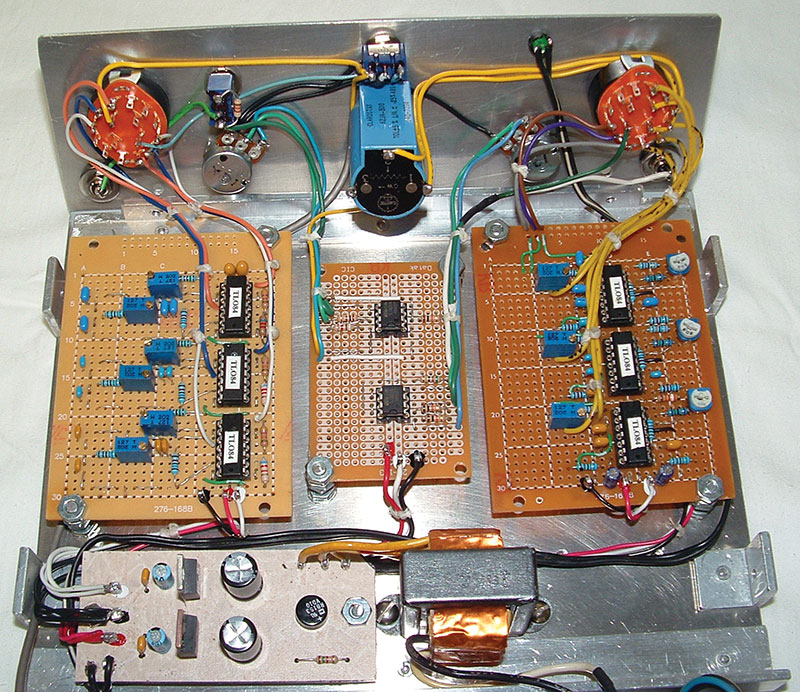
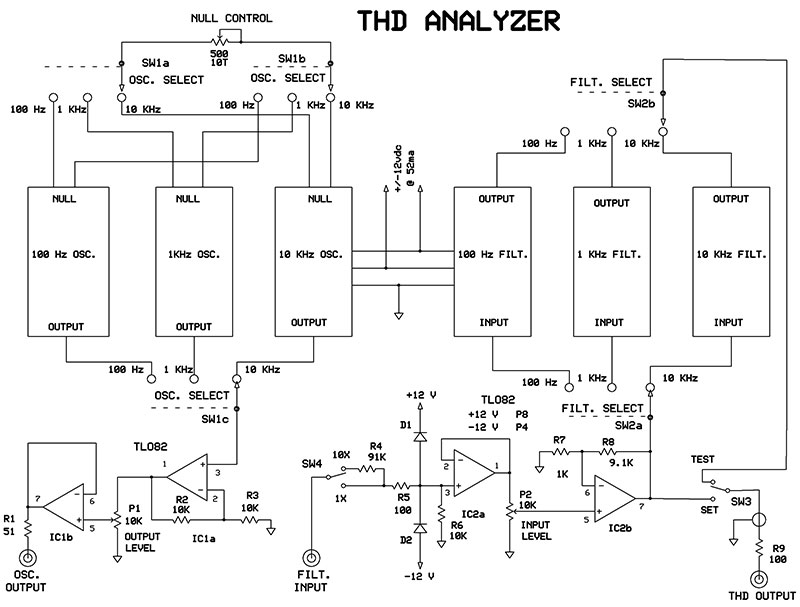
Schematic files: https://www.nutsvolts.com/uploads/magazine_downloads/201811-Reed.zip 49 KB
Build a Basic Audio Distortion Analyzer, by Robert Reed
Build a Basic Audio Distortion Analyzer | Nuts & Volts Magazine


Schematic files: https://www.nutsvolts.com/uploads/magazine_downloads/201811-Reed.zip 49 KB
A miracle! I managed to build a Basic Audio Distortion Analyzer thanks to your schematicBuild a Basic Audio Distortion Analyzer
Build a Basic Audio Distortion Analyzer, by Robert Reed
Build a Basic Audio Distortion Analyzer | Nuts & Volts Magazine


Schematic files: https://www.nutsvolts.com/uploads/magazine_downloads/201811-Reed.zip 49 KB
Thank you very much!A miracle! I managed to build a Basic Audio Distortion Analyzer thanks to your schematic
- Home
- Design & Build
- Equipment & Tools
- DIY Distortion Analyzer/Analysis?
